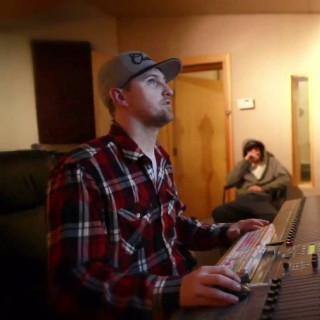
Folk-lore of Shakespeare - Chapter XVII. Dances
T.F. Thiselton Dyer
38
Poetry,Dance
Tekst piosenki
CHAPTER XVII.
DANCES.
We are indebted to Shakespeare for having bequeathed to us many interesting allusions to some of the old dances in use in his day, but which have long ago passed into oblivion. As will be seen, these were of a very diverse character, but, as has been remarked, were well suited to the merry-doings of our forefathers; and although in some cases they justly merited censure for their extravagant nature, yet the greater part of these sources of diversion were harmless. Indeed, no more pleasing picture can be imagined than that of a rustic sheep-shearing gathering in the olden times, when, the work over, the peasantry joined together in some simple dance, each one vieing with his neighbour to perform his part with as much grace as possible.
Antic.—This was a grotesque dance. In "Macbeth" (iv. i), the witch, perceiving how Macbeth is affected by the horrible apparitions which he has seen, says to her sisters—
"Come, sisters, cheer we up his sprites,
And show the best of our delights.
I'll charm the air to give a sound,
While you perform your antic round."
To quote another instance, Armado, in "Love's Labour's Lost" (v. 1), says,—
"We will have, if this fadge not, an antique."
Bergomask Dance.—According to Sir Thomas Hanmer, this was a dance after the manner of the peasants of Bergomasco, a county in Italy belonging to the Venetians. All the buffoons in Italy affected to imitate the ridiculous jargon of that people, and from thence it became customary to mimic also their manner of dancing. In the "Midsummer Night's Dream" (v. 1), Bottom asks Theseus whether he would like "to hear a Bergomask dance," between two of their company.
Brawl.—This was a kind of dance. It appears that several persons united hands in a circle, and gave one another continual shakes, the steps changing with the tune. With this dance balls were usually opened. 1 Kissing was occasionally introduced. In "Love's Labour's Lost" (iii. 1), Moth asks his master,—
"Will you win your love with a French brawl."
Canary.—This was the name of a sprightly dance, the music to which consisted of two strains with eight bars in each; an allusion to which is made by Moth in "Love's Labour's Lost" (iii. i), who speaks of jigging off a tune at the tongue's end, and canarying to it with the feet: And in "All's Well that End's Well" (ii. 1), Lafeu tells the king that he has seen a medicine,—
"That's able to breathe life into a stone,
Quicken a rock, and make you dance canary
With spritely fire and motion."
This dance is said to have originated in the Canary Islands, an opinion, however, which has, says Dyce, been disputed.
Cinque-Pace.—This was so named from its steps being regulated by the number five—
"Five was the number of the music's feet,
Which still the dance did with five paces meet."
In "Much Ado About Nothing" (ii. 1), Shakespeare makes Beatrice make a quibble upon the term; for after comparing wooing, wedding, and replating to a Scotch jig, a measure, and a cinque-pace, she says—"Then comes repentance, and, with his bad legs, falls into the cinque-pace faster and faster, till he sink into his grave." A further reference occurs in "Twelfth Night" (i. 3), by Sir Toby Belch, who calls it a "sink-a-pace."
Coranto.—An allusion to this dance, which appears to have been of a very lively and rapid character, is made in "Henry V." (iii. 5), where the Duke of Bourbon describes it as the "swift coranto;" and in "All's Well That Ends Well" (ii. 3), Lafeu refers to it. A further notice of it occurs in "Twelfth Night" (i. 3), in the passage where Sir Toby Belch speaks of "coming home in a coranto."
Fading.—Malone quotes a passage from "Sportive Wit," 1666, which implies that this was a rustic dance—
"The courtiers scorn us country clowns,
We country clowns do scorn the court;
We can be merry upon the downs
As you at midnight with all your sport,
With a fading, with a fading."
It would appear, also, from a letter appended to Boswell's edition of "Malone," that it was an Irish dance, and that it was practised upon rejoicings as recently as 1803, the date of the letter—
"This dance is practised on rejoicing occasions in many parts of Ireland; a king and queen are chosen from amongst the young persons who are the best dancers; the queen carries a garland composed of two hoops placed at right angles, and fastened to a handle; the hoops are covered with flowers and ribbons; you have seen it, I dare say, with the May-maids. Frequently in the course of the dance the king and queen lift up their joined hands as high as they can, she still holding the garland in the other. The most remote couple from the king and queen first pass under; all the rest of the line linked together follow in succession. When the last has passed, the king and queen suddenly face about and front their companions; this is often repeated during the dance, and the various undulations are pretty enough, resembling the movements of a serpent. The dancers on the first of May visit such newly married pairs of a certain rank as have been married since last May-day in the neighbourhood, who commonly bestow on them a stuffed ball richly decked with gold and silver lace, and accompanied with a present in money, to regale themselves after the dance. This dance is practised when the bonfires are lighted up, the queen hailing the return of summer in a popular Irish song beginning:—
"We lead on summer—see! she follows in our train."
In the "Winter's Tale" (iv. 4), Shakespeare seems to allude to this dance where he makes the servant speaking of the pedlar say—"He has the prettiest love songs for maids; so without bawdry, which is strange; with such delicate burthens of dildos and fadings, &c." Some commentators, 1 however, consider that only the song is meant.
Hay.—Douce, 2 says, this dance was borrowed by us from the French, and is classed among the "brawls" in Thoinot Arbeau's "Orchesographie (1588.) In "Love's Labour's Lost" (v. 1), Dull says:—
"I will play
On the tabor to the Worthies, and let them dance the hay."
Jig.—Besides meaning a merry sprightly dance, a jig also implied a coarse sort of comic entertainment, in which sense it is probably used by Hamlet (ii. 2); "He's for a jig or a tale of bawdry." "It seems," says Mr Collier, "to have been a ludicrous composition in rhyme, sung, or said, by the clown, and accompanied by dancing and playing upon the pipe and tabor," an instance of which perhaps occurs in the clown's song at the close of "Twelfth Night"—
"When that I was and a little tiny boy," etc.
Fletcher in the Prologue to the "Fair Maid of the Inn," says:—
"A jig should be clapt at, and every rhyme
Praised and applauded by a clamorous chime."
Amongst the allusions to this dance, we may quote one in "Much Ado About Nothing" (ii. 1), where Beatrice compares wooing to a Scotch jig, and another in "Twelfth Night" (i. 3), where Sir Toby Belch says, his "very walk should be a jig."
Lavolta.—According to Florio the lavolta is a kind of turning French dance, in which the man turns the woman round several times, and then assists her in making a high spring or cabriole. It is thus described by Sir John Davies:—
"Yet is there one the most delightfull kind,
A loftie jumping, or a leaping round,
Where arme in arme two dauncers are entwined,
And whine themselves, with strict embracements bound;
And still their feet an anapest do sound,
An anapest is all their musicks song,
Whose first two feet are short, and third is long."
Douce, however, considers it to be of Italian origin, and says, "it passed from Italy into Provence and the rest of France, and thence into England." Scot, too, in his "Discovery of Witchcraft," thus speaks of it:—"He saith, that these night walking or rather night dancing witches, brought out of Italie into France that dance which is called la Volta. Shakespeare in his "Henry V." (iii. 5), makes the Duke of Bourbon allude to it:—
"They bid us to the English dancing-schools,
And teach lavoltas high and swift corantos."
Again in "Troilus and Cressida" (iv. 4), Troilus says—
"I cannot sing,
Nor heel the high lavolt."
Light o’ Love.—This was an old tune of a dance, and was a proverbial expression for levity especially in love matters. In "Much Ado About Nothing" (iii. 4), Margaret says: "Clap's into 'light o’ love'; that goes without a burden; do you sing it, and I'll dance it," to which Beatrice answers, "Ye light o’ love, with your heels."
In "Two Gentlemen of Verona" (i. 2), it is alluded to:—
Julia—"Best sing it to the tune of 'Light o’ love.'
Lucetta—"It is too heavy for so light a tune."
In the "Two Noble Kinsmen" (v. 2), we read:—
"He'll dance the Indins twenty mile an hour,
And gallops to the tune of Light o’ love."
And in Beaumont and Fletcher's "Chances" (i. 3), Frederic says, "Sure he has encounter’d some light-o’-love or other."
Pavan.—This was a grave and majestic dance in which the gentlemen wore their caps, swords, and mantles, and the ladies their long robes and twains. The dancers stepped round the room and then crossed in the middle, trailing their garments on the ground, "the motion whereof," says Sir J. Hawkins, "resembled that of a peacock's tail." It is alluded to in "Twelfth Night" (v. 1) by Sir Toby:—"A passy measures pavin," although the reading of this passage is uncertain, the editors of the "Globe" edition substituting panyn.
It has been conjectured that the "passy measure galliard," and the "passy measure pavan" were only two different measures of the same dance, from the Italian passarezzo.
Roundel.—This also called the "round," a dance of a circular kind, and is probably referred to by Titania in the "Midsummer Night's Dream" (ii. 3), where she says to her twain:—
"Come now, a roundel and a fairy song."
Ben Jonson, in the "Tale of a Tub," seems to call the rings, which such fairy dances are supposed to make in the dance, roundels.
"I'll have no roundels, I in the queen's paths."
Satyr's Dance.—A dance of Satyrs was a not uncommon entertainment in Shakespeare's day, or even at an earlier period. It was not confined to England, and has been rendered memorable by the fearful accident with which it was accompanied at the Court of France in 1392, a graphic description of which has been recorded by Froissart. In the "Winter's Tale" (iv. 4), the Satyr's dance is alluded to by the Servant, who says:—"Master, there is three carters, three shepherds, three neat-herds, three swine-herds, that have made themselves all men of hair; they call themselves Saltiers: and they have a dance which the wenches say is a gallimaufry of gambols, because they are not in’t." In a book of songs, composed by Thomas Ravenscroft and others, in the time of Shakespeare, we find one called the "Satyres’ daunce." It is for four voices, and as follows:—
"Round a round, a rounda, keepe your ring
To the glorious sunne we sing.
Hoe, hoe!
He that weares the flaming rayes,
And the imperiall crowne of bayes,
Him, with him, with shoutes and songs we praise.
Hoe, hoe!
That in his bountee would vouchsafe to grace
The humble sylvanes and their shaggy race."
Sword-Dance.—In olden times there were several kinds of sword-dances, most of which afforded opportunities for the display of skill. In "Antony and Cleopatra" (iii. 4), there seems to be an allusion to this custom, where Antony, speaking of Cæsar, says:—
"He at Philippi kept
His sword e’en like a dancer."
And in "All's Well that ends Well" (ii. 1), where Bertram, lamenting that he is kept from the wars, adds:—
"I shall stay here the forehorse to a smock,
Creaking my shoes on the plain masonry,
]Till honour be bought up and no sword worn
But one to dance with."
In "Titus Andronicus" (ii. 1), too, Demetrius says to Chiron:—
"Why, boy, although your mother, unadvised
Gave you a dancing rapier by your side."
Tread a Measure, to which the King refers in "Love's Labour's Lost" (v. 2), when he tells Boyet to tell Rosaline—
"We have measured many miles,
To tread a measure with her on this grass,"
was a grave solemn dance, with slow and measured steps like the minuet. As it was of so solemn a nature it was performed at public entertainments in the Inns of Court, and it was "not unusual, nor thought inconsistent, for the first characters in the law to bear a part in treading a measure."
Trip and Go was the name of a favourite Morris dance, and appears, says Mr Chappell, in his "Popular Music of the Olden Times, &c." (2nd edition, i. p. 131), to have become a proverbial expression. It is used in "Love's Labour's Lost" (iv. 2).
Up-spring.—From the following passage, in Chapman's "Alphonsus, Emperor of Germany," it would seem that this was a German dance:—
"We Germans have no changes in our dances;
An almain and an up-spring, that is all."
Karl Elze, who, a few years ago, reprinted Chapman's "Alphonsus" at Leipzig, says that the word "up-spring" "is the 'Hüpfauf,' the last and wildest dance at the old German merry-makings. No epithet could there be more appropriate to this drunken dance than Shakespeare's swaggering" in "Hamlet" (i. 4):—
"The King doth wake to-night, and takes his rouse,
Keeps wassail, and the swaggering up-spring reels."
Tłumaczenie
Brak
Polecani artyści
Najnowsze teksty piosenek
Sprawdź teksty piosenek i albumy dodane w ciągu ostatnich 7 dni


























